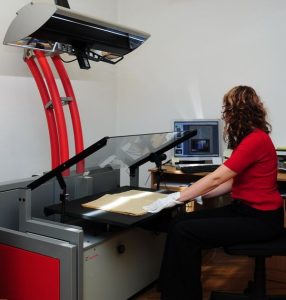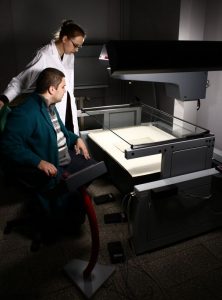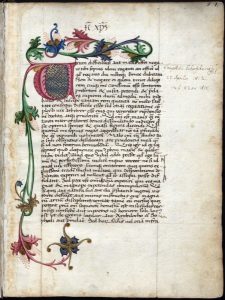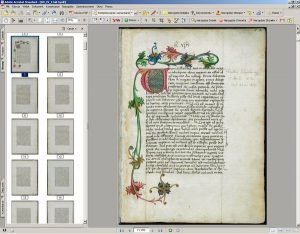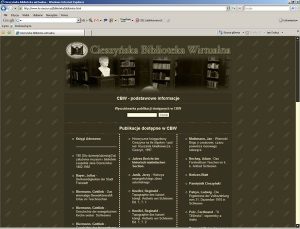In incorporating this task in the project, the organisers could draw from the experiences of Książnica Cieszyńska, which had begun a long-term digitisation project of its collection in 2003. In its pilot phase, when use was made of the library’s own resources and the simple informational tools at its disposal, all the historical collection catalogues underwent digitisation.
In 2003-2005, they were made available online, becoming – alongside the databases that were being compiled at the same time – a valuable element of Książnica Cieszyńska’s search instruments. Parallel to this, work on the digitisation of the catalogue documentation, the construction of the Cieszyn Virtual Library (Cieszyńska Biblioteka Wirtualna) was begun, part of which included making electronic copies of around 100 works, comprising Cieszyn’s historical literary canon.
Despite the fact that the works were presented only as graphic files, precluding an effective search system, the Cieszyn Virtual Library met with considerable interest from internet users, measured systematically by the growing number of hits and numerous links on Polish and foreign web portals. Its functioning helped Książnica Cieszyńska to discover the needs concerning access to electronic versions of the written documents about Cieszyn Silesia, and also the organisational and technical potential of its digitisation and popularisation. These experiences proved to be extremely useful during the preparations for the project The Preservation and Restoration of Cieszyn’s Written Heritage.
Initiating work on digitisation in 2003, Książnica Cieszyńska decided that digitisation should be carried out on those collections of strictly regional character, which had little chance of being included in digitisation projects carried out by other centres. Unlike many Polish libraries, where digitisation began with their incunabula and pre-1801 imprints, Książnica concentrated on writings which originated in or dealt with the region.
This principle, established right from when the Cieszyn Virtual Library was being created, found its application during the project The Preservation and Restoration of Cieszyn’s Written Heritage. Here, digitisation was carried out on historical Cieszyn periodicals, which, since they enjoy huge popularity among readers, are more at risk of rapid destruction, owing to their paper’s high degree of acidity.
Other materials to undergo digitisation were primary sources in the form of manuscripts concerning the history of Cieszyn Silesia, including the collection of manuscripts from the Library of Leopold Jan Szersznik, the collection of historical records of the Lutheran Parish, a large proportion of the Cieszyn municipal records in the State Archives and important parts of the Cieszyn archives of the Order of the Brothers Hospitallers.
Around 570 000 pages were digitised during the project, of which close to 390 000 were digitised in Książnica, 120 000 in the State Archives, approximately 28 000 in the Tschammer Library and Archives, 30 000 in the Archives and Library of the Brothers Hospitallers and 1 000 pages in the Museum of Cieszyn Silesia. This task – with the exception of the State Archives in Katowice, where most of the work linked to the digitisation and microfilming was done in its own reprographic workshop – was carried out by two specialist companies, the Poznań Digital-Centre and Mikrofilm-Service from Raszyn, selected through the tendering process.
As a result of their work, apart from the source TIFF copies (full colour and resolution of 300 dpi) and functional publications in PDF and DjVu formats (which in the case of periodicals printed in a Latin font are supplied with an OCR text layer created using the FineReader programme) microfilm copies were also created, intended for permanent archival use.
In this way, the process of digitisation, a crucial element of the project, was carried out in full, where efforts to improve the collection’s safety were to be linked to efforts to increase their accessibility. In this case it meant, on one hand, the withdrawal from circulation of certain parts of the collections, and on the other, their replacement with digital copies, ensuring the possibility of unlimited access to their content.
To see the results in practice, one may take advantage of the Silesian Digital Library (www.sbc.org.pl), which Książnica Cieszyńska joined on 23 January 2009 – while the project was still being implemented – thus giving it the opportunity to make its digital resource available online. In the future, the remaining project participants are to join the Silesian Digital Library, and make available copies of their imprints and manuscripts.
